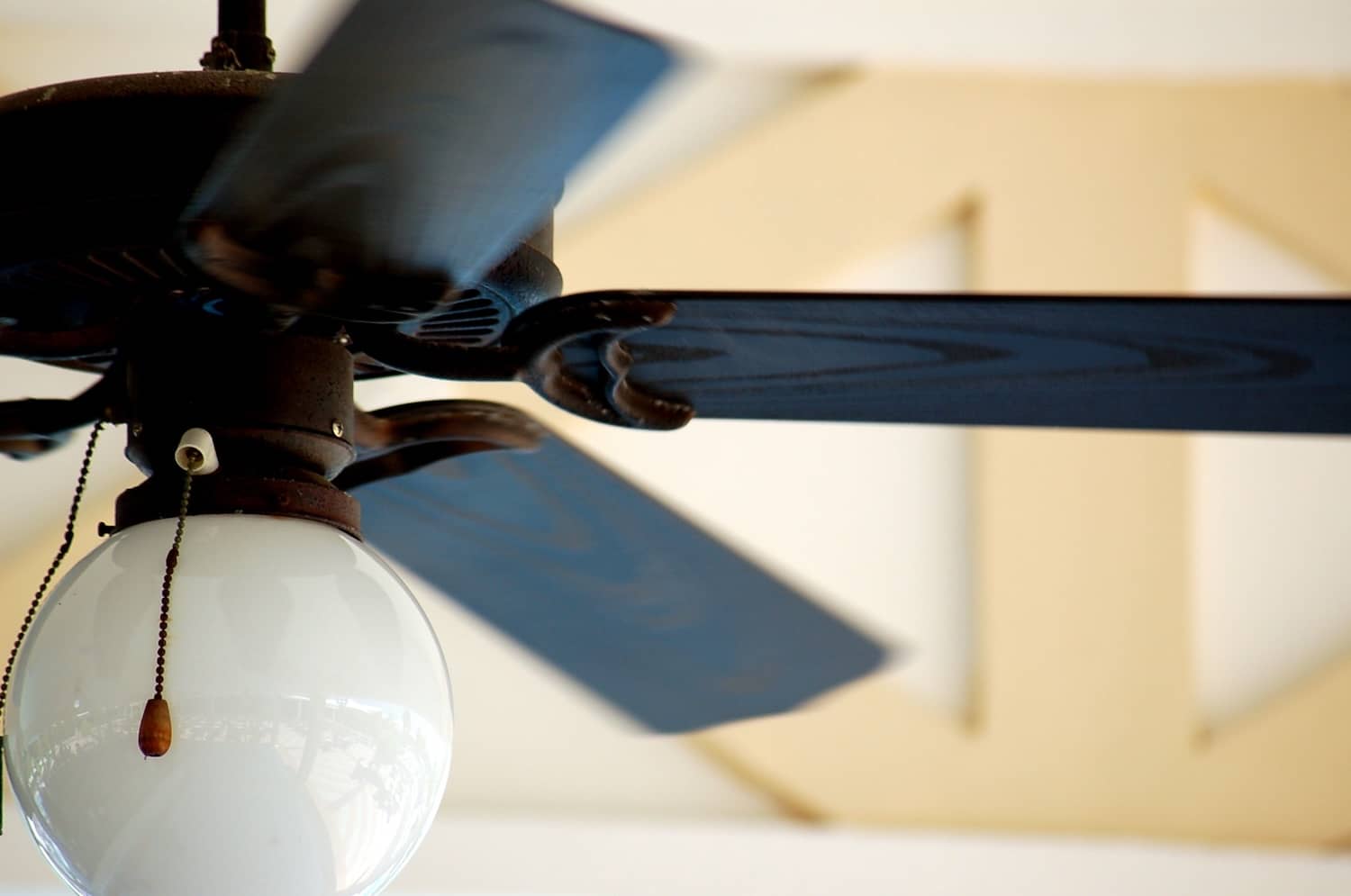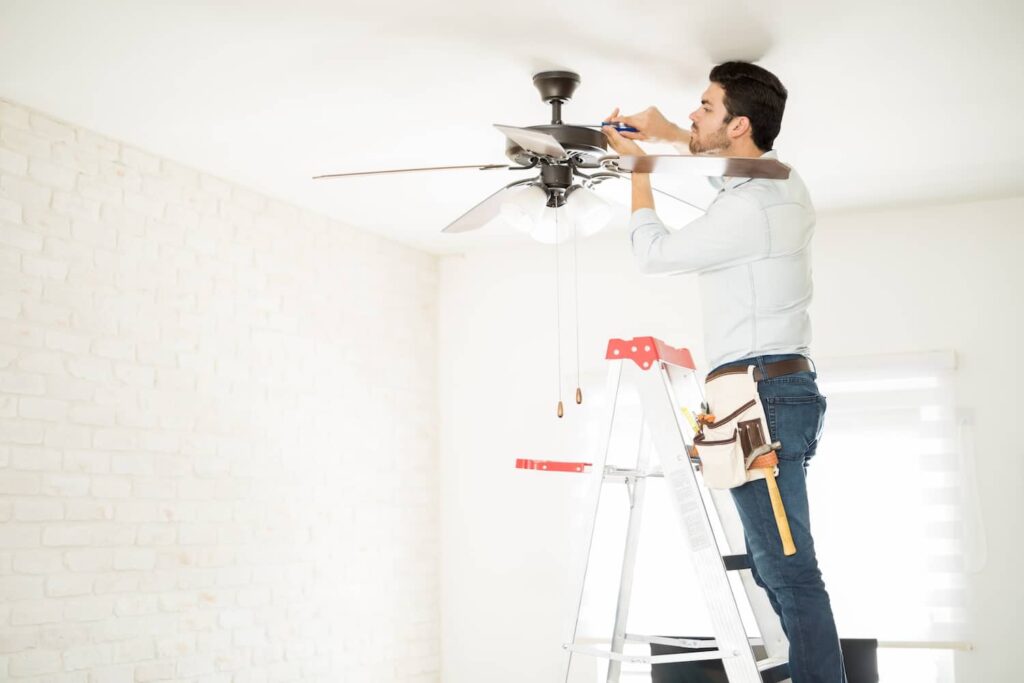
Regardless of the season, it’s always beneficial to understand how your home appliances function to provide optimal comfort. In the warmer months, most homeowners are looking for ways to keep their living spaces comfortable without cranking up the air conditioner. One often overlooked tool at your disposal is your ceiling fan. But did you know that the direction of its rotation can influence how effectively it cools your home? This makes many wonder which way a ceiling fan should turn in the summer. Great question!
Understanding the dynamics of your ceiling fan might seem trivial, but it can significantly impact your home’s comfort and your energy consumption. This is a simple, yet effective way of mastering your home’s cooling system. So, let’s deep dive into the world of ceiling fans to ensure you’re ready for whatever the weather brings.
Why Ceiling Fan Direction Matters
Now, you might be wondering why the direction of a ceiling fan even matters. It all comes down to the way it circulates air within a room. The rotation direction of the fan blades influences whether the air is drawn upwards or pushed downwards, directly affecting how warm or cool the room feels.
To explain a bit further, when your ceiling fan rotates counterclockwise, it pushes air downwards, creating a breeze that can make your skin feel cooler through a phenomenon known as the wind chill effect. This is why a counterclockwise rotation is typically recommended for warmer months.
On the other hand, when the fan spins clockwise, it pulls air upwards. This process redistributes warm air that naturally rises towards the ceiling, pushing it down the walls and back into the room. This effect is especially useful during colder months to supplement your heating system.
Understanding and adjusting your ceiling fan direction can enhance your home’s comfort and even mean reduced reliance on air conditioning or heating systems, leading to decreased energy consumption. This is not just beneficial for your wallet but also contributes positively towards environmental sustainability by promoting efficient energy usage.

Determining and Changing Ceiling Fan Direction
Now that we understand why the direction of your ceiling fan matters, let’s get practical. How do you determine the current direction of your ceiling fan, and how can you change it if needed? It’s easier than you might think!
Which Way Is the Fan Currently Turning?
You can determine the current direction of your ceiling fan by simply observing it. Turn on your fan and stand directly beneath it. If you feel a strong breeze or wind chill, the fan is rotating in a counterclockwise direction, which is ideal for summer.
On the other hand, if you don’t feel much air movement, the fan is likely spinning in a clockwise direction. This airflow pattern is more subtle as it pulls air up and circulates warm air around the room, which is better suited for winter.
Changing Directions
Most ceiling fans come with a small switch on the motor housing that changes the rotation direction. Here’s a simple step-by-step guide to help you through the process:
Ensure Safety: Make sure your fan is turned off and has stopped moving completely to avoid injury. If your fan is high up, you might need a step ladder to reach it.
Locate the Switch: Find the direction switch on the fan. It’s typically on the side of the fan’s center point or motor housing.
Flip the Switch: Simply flip the switch in the opposite direction. One position will make the fan run clockwise, and the other will make it run counterclockwise.
Check the Direction: Turn the fan back on and observe the airflow. If it’s summer, you should feel a cool breeze when standing directly under the ceiling fan. And that’s it! You’ve successfully changed the direction of your ceiling fan.

Other Recommended Maintenance for Ceiling Fans
Now that you know which way a ceiling fan should turn in the summer (and how to determine the current direction), let’s talk about some other maintenance tasks that can keep your fan running smoothly and efficiently all year round.
Cleaning Your Ceiling Fan
Dust and dirt can accumulate on your fan blades over time, making the fan work harder and potentially decreasing its lifespan. Therefore, make it a point to clean your fan blades regularly. Use a soft cloth or a vacuum with a brush attachment to gently clean the blades. Remember to turn off the fan before you start cleaning!
Checking for Wobbles
A wobbling ceiling fan can be a nuisance and may indicate a more serious issue. It could indicate that your fan is out of balance or not properly secured to the ceiling. If your fan wobbles, first check to ensure all screws are tight. If the wobble persists, a ceiling fan balancing kit can help correct the issue.
Lubricating the Fan
Some ceiling fan models require occasional lubrication to keep them running smoothly. Refer to your fan’s instruction manual to see if this is necessary and for specific directions. Usually, a few drops of oil in the designated oil hole once a year will suffice.
Replacing the Fan
Ceiling fans typically have a long lifespan, but like any appliance, they can wear out. If your fan wobbles excessively, makes a lot of noise, or doesn’t deliver enough airflow even after performing all the necessary maintenance, it might be time to replace it.
Remember, regular maintenance helps extend the life of your ceiling fan and ensure it operates at peak efficiency. With these tips, you’re well on your way to maintaining a comfortable and energy-efficient environment in your home.
When to Call a Professional
Although most ceiling fan maintenance can be performed at home, there are situations where you may want to call in a professional.
If you’re dealing with complex Installations like high ceilings, integrating with existing light fixtures, or complex wiring, consider hiring a professional to ensure safe and effective installation.
Also, electrical Issues such as power surges, flickering lights, or tripped circuit breakers indicate serious electrical problems. In these cases, consult a licensed electrician immediately. If your fan persistently makes strange noises or vibrates excessively despite your efforts to balance it or tighten loose screws, a professional should assess it for potential internal issues.
For a fan with a motor that frequently overheats, an expert can identify and address underlying issues such as worn-out bearings or internal wiring problems. Lastly, if your fan is old or inefficient, a professional can guide you in choosing and installing a suitable replacement.
Wrapping Up
To recap, managing your ceiling fan’s direction and speed can significantly improve your home’s comfort and energy efficiency. Remember, during summer, your ceiling fan should rotate counterclockwise at a higher speed, and in winter, it should rotate clockwise at a slower pace.
Regular upkeep, such as cleaning, balancing, and occasionally lubricating your fan, ensures its longevity and optimal functionality. If you ever have questions or need professional help, don’t hesitate to reach out to Atkinson Inspection Services for expert inspections and advice.



